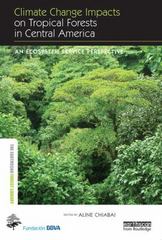Solve clet
Refer to the table of estimated regressions below, computed using data for 1999 from all 420 K-6 and K-8 districts in California, to answer the following question. The variable of interest, test scores, is the average of the reading and math scores on the Stanford 9 Achievement Test, a standardized test administered to fifth grade students. School characteristics (average across the district) include enrollment, number of student. teachers (measured as "full-time equivalents"), number of computers per classroom, and expenditure per Results of Regressions of test scores on the Student-Teacher Ratio and Student Characteristic Control Variables Using California Elementary School Districts Dependent variable: average test score in the district. Regressor (1) (2) (3) (4) (5) Student-teacher ratio (X1 ) -2.33* -1.12 - 1.76* - 1.72* - 1.43+ (0.58) (0.44) (0.29) (0.36) (0.26) Percent English learners (X2) -0.674* - 0.109+* -0.423*+ -0.163** (0.035) (0.036) (0.034) (0.036 Percent elegible for subsidized lunch (X3) -0.507+* - 0.592** (0.023) (0.037) Percent on public income assistance (X4) - 0.767** 0.042 (0.065) (0.054) Intercept 690.8** 686.4** 701.4** 702.5+* 704.6+ 9.9 (8.1) (5.3) (6.6 (5.6) Summary Statistics and Joint Tests SER 18.51 14.12 9.42 11.21 9.86 R 0.043 0.469 0.752 0.683 0.723 n 418 418 418 418 418 These regressions were estimated using data on K-8 school districts in California. Heteroskedastic-robust standard errors are given in parentheses under coefficients. The individual coefficient is statistically significant at the *5% level or **1% significance level using a two-sided test. Compute the R- for each of the regressions. 1. The R for the regression in column (1) is: 2. The R for the regression in column (2) is: 3. The R for the regression in column (3) is: 4. The R for the regression in column (4) is: 5. The R for the regression in column (5) is: (Round your response to three decimal places) Construct the homoskedasticity-only F-statistic for testing /3 = 4 =0 in the regression shown in column (5). The homoskedasticity-only F-statistic for the test is: (Round your response to two decimal places) Is the homoskedasticity-only F-statistic significant at the 5% level? O A. Yes. O B. No







